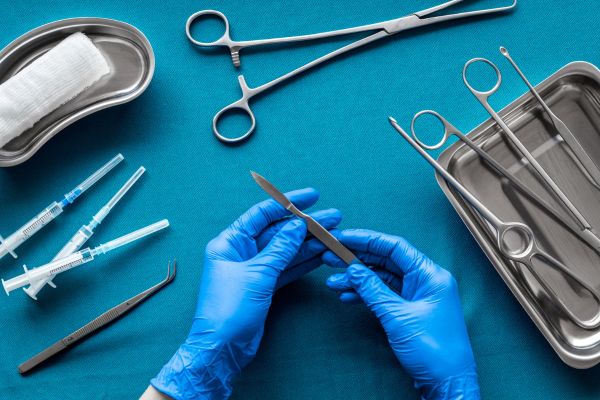Surgical Tools To Understand Before Studying Medicine
The medical field uses a wide array of tools and equipment, each with unique applications for procedures and surgeries. If you’re preparing to study in the medical field, familiarizing yourself with the basic surgical tools will help you approach your study materials confidently. Explore some of the most common surgical tools across various positions and fields, including their applications and distinguishable features.
Categories of Surgical Tools
There are three main surgical tool categories to understand: cutting and dissecting tools, clamping and occluding tools, and retracting and exposure tools.
Cutting and dissecting tools are ideal for making incisions and cutting tissues and sutures. Examples of these instruments include scalpels, scissors, and lancets.
Clamping and occluding tools control blood flow and hold tissues securely. These include clamps and forceps, such as hemostats and towel clamps.
Lastly, retraction and exposure tools improve visibility and access during surgical procedures. Common examples are retractors and speculums. Understanding the function of these tools is fundamental to successful surgical practice.
Keep reading to find examples of common tools from these three categories.
Surgical Scissors
Surgical scissors cut through various types of tissues with precision and efficiency. These specialized instruments come in a range of shapes and sizes, each tailored to perform a specific task. Some scissors feature meticulous details to make delicate, intricate cuts, ensuring precision in sensitive areas. Other types of surgical scissors tackle denser tissues with ease, providing surgeons with the necessary tools to navigate through different surgical challenges.
Surgical Forceps
Forceps feature designs for delicately grasping, manipulating, or extracting tissue. Forceps feature intricate tips for precise work in confined areas and sturdier, robust designs capable of handling substantial tissue or dressing with precision and control. Their versatility and utility make forceps an indispensable tool in medicine.
Tweezers, often confused with forceps, are another type of grasping tool that medical professionals use. It helps to understand the differences between forceps and tweezers because some medical students and professionals use the words interchangeably.
Surgical Scalpels
Scalpels can make precise incisions in various tissues during medical procedures. These specialized tools feature detachable blades in all shapes and sizes. This versatility allows surgeons to achieve the specific level of precision required for different types of surgeries, ensuring optimal outcomes for patients.
Needles and Sutures
Needles and sutures assist in closing wounds and surgical incisions. Sutures, which consist of strands of material, help medical professionals delicately sew body tissues together, ensuring optimal healing and recovery. Needles play a crucial role in this process, carefully passing these sutures through the tissues with precision and expertise. Their combined use enables health-care professionals to provide effective wound closure, promoting the body’s natural healing process and facilitating the restoration of tissues to their optimal state.
With the current high demand for health-care jobs and many other reasons to consider a career in medicine, now is a great time to pursue these studies. Understanding surgical tools is an integral part of studying medicine. The knowledge prepares you for future surgical procedures and gives you a deeper understanding of the complexities of medical surgeries. As you advance in your studies, you’ll continue to expand your knowledge of these essential tools and many others, laying a solid foundation for a successful medical career.

